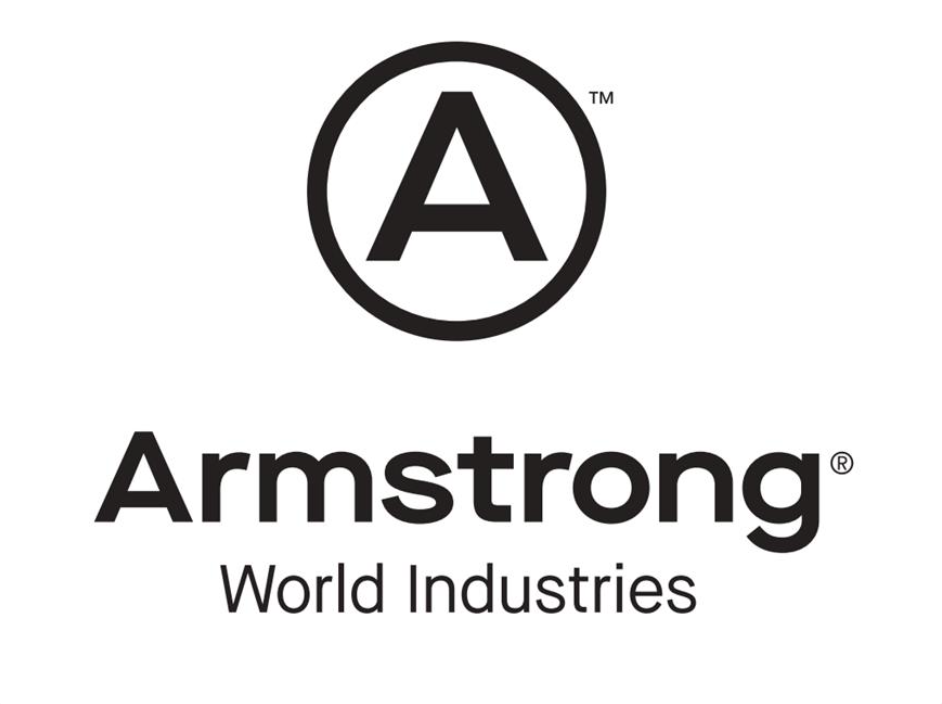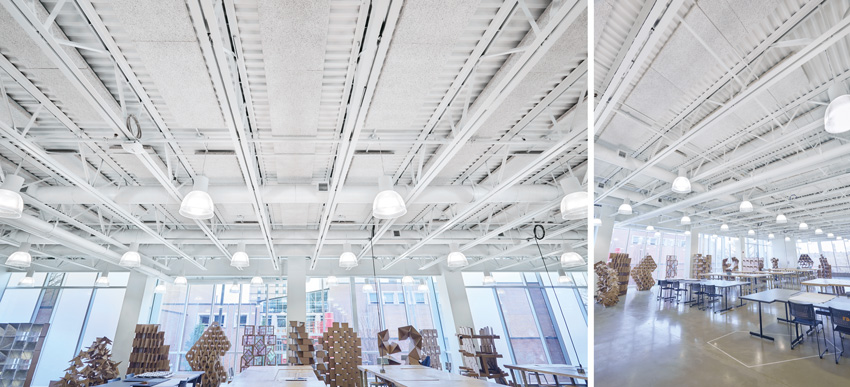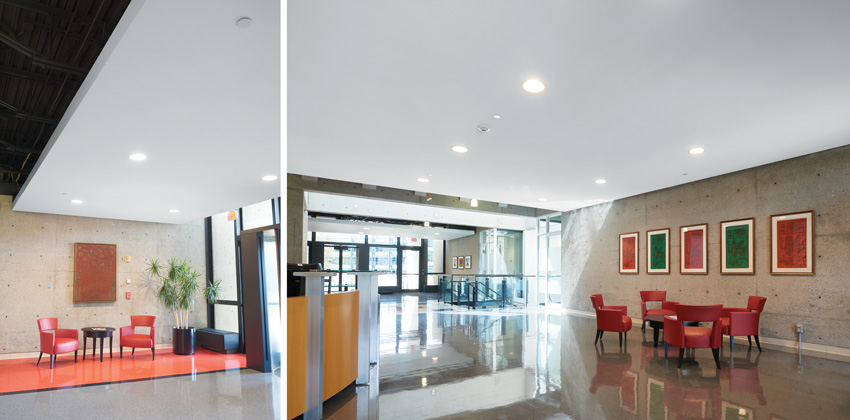New Acoustical Options in Specialty and Seamless Ceiling Systems
Seamless Ceiling Systems
If a seamless ceiling—that is, one without any exposed grid—is desired in a commercial space, the default approach is to use a suspended gypsum drywall ceiling. While that solves the appearance issue, it doesn’t solve the acoustical issues since drywall is a hard and sound-reflective surface. That means if sound absorption is needed, then something else needs to be done to compensate for the reflectivity in the space.
As an alternative, seamless acoustical mineral fiber panels are available that can be suspended into a space and then finished to provide the desired seamless appearance comparable to gypsum drywall. This is achieved by using seaming tapes and compounds specifically made for this type of product. The surface is then finished similarly to drywall using acoustically transparent paint to achieve the look of a smooth, acoustical finish. Most significant to our discussion, the mineral fiber panels also provide acoustical performance that is much better than gypsum drywall in many situations. With a higher degree of sound absorption, the spaces where it is used can have reduced reverberation, improved speech intelligibility, and less noise transfer through the ceiling to other spaces.
As a mineral fiber product, seamless ceilings can carry the same sustainability traits as other sustainable ceiling products. These can include contributions to LEED v4, including the latest Materials and Resources credits. They may also have environmental product declarations (EPDs), which indicate the environmental impact of the products, and/or health product declarations (HPDs), which identify the ingredients in the products. If they are free of Red List chemicals per The Living Building Challenge 3.0, they can also carry a Declare label, which is an easy reference means of identifying the basic ingredients of a product. All of these can allow the use of the products to contribute to the Living Building Challenge and/or to the WELL Building Standard. Finally, some may meet California Department of Public Health (CDPH) low-emissions standards.
Conclusion
Design professionals don’t have to sacrifice design vision for great acoustics. Instead, we can now use specialty products that didn’t exist before, including geometric shapes, low- and high-relief textures, acoustical wood grain ceilings, metal ceilings, exposed structure solutions, and even acoustical seamless ceilings. All of these current options mean that ceilings can be visually appealing while providing great acoustics.
Peter J. Arsenault, FAIA, NCARB, LEED AP, is a nationally known architect, consultant, continuing education presenter, and prolific author advancing building performance through better design. www.pjaarch.com, www.linkedin.com/in/pjaarch
 |
Armstrong World Industries is a leader in the design and manufacture of innovative commercial ceiling and wall systems. At home, at work, in health-care facilities, classrooms, stores, and restaurants, Armstrong Ceiling & Wall Solutions offer interior options that help
create healthy, sustainable spaces that protect people and cultivate well-being and comfort so they can be at their best.
Armstrong is committed to developing new and sustainable ceiling solutions, with design and performance possibilities that empower its customers to create beautiful, high-performance residential and commercial buildings. Armstrong continues to grow and prosper for the benefit of all its stakeholders. armstrongceilings.com/commercial |










